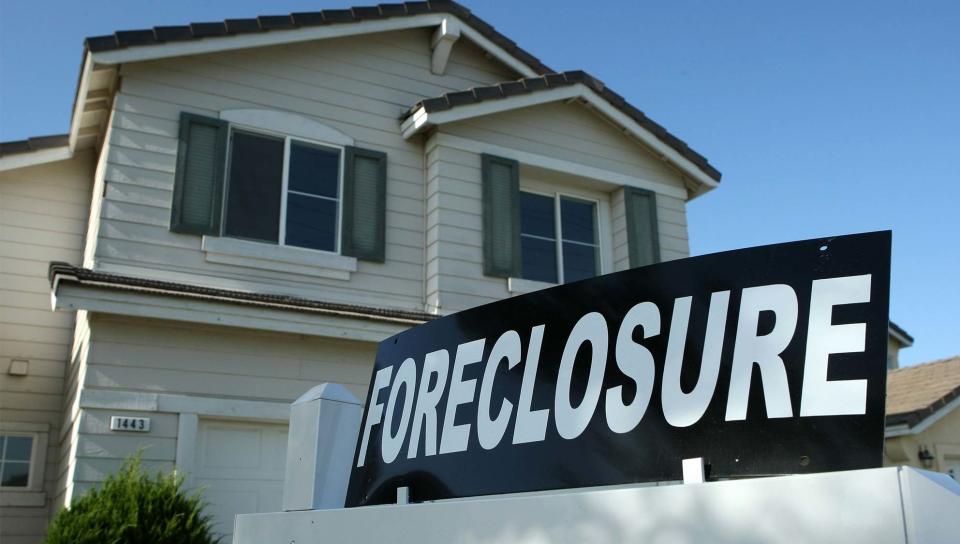Why You’re Seeing Fewer ‘Foreclosure’ Signs
Justin Sullivan/Getty Images
Foreclosure filings have hit a 10-year low, dropping 14% in 2016 from the year before, according to figures released by property database ATTOM Data Solutions on Thursday, as the housing market distances itself from the Great Recession.
There were 933,000 filings in the country last year. Filings in December alone dropped 1% since November and 17% from the year before, the study found. The database counts properties with publicly disclosed foreclosure filings, such as default notices, scheduled auctions and bank repossessions. “The housing market for the most part has put the housing crisis behind it,” said Daren Blomquist, senior vice president at ATTOM.
A decline in filings is inspiring news for the housing market, which is still reeling from the mid-2000s bubble that drastically impacted the economy — 55% of the loans in the process of foreclosure were originated between 2004 and 2008. Banks are clearing through those most distressed, Blomquist said.
The last of the recession-era foreclosures overall are being weeded out of the market. Completed foreclosures decreased almost 26% in November, compared with the same time a year ago, according to Irvine, Calif.-based analytics company CoreLogic. It’s an even steeper fall (78%) since the peak of foreclosures in September 2010.
Stricter lending requirements, an improving economy and government regulations should bode well for the most recent crop of mortgages, said Sam Khater, deputy chief economist at CoreLogic. But this means it’s also getting tougher to buy a home, particularly for first-time buyers because of rising home prices, interest rates and lenders’ expectations of borrowers’ credit scores, which increased by five points to 739 in the third quarter last year, up from 640 in 2001.
“When we look at mortgages originated from 2010 and beyond, they are absolutely pristine,” he added. “They are the best performing mortgages in 20 years.”
Some communities, including San Francisco and Los Angeles, have drastically improved but markets in the Midwest and parts of the Northeast are still struggling. “Zombie” foreclosures, which are properties in the process of being foreclosed but are currently vacant, made up 4.7% of all foreclosures in the third quarter, and were rising in states including New York and Massachusetts.
The biggest backlogs of these “legacy foreclosures” are in New Jersey, New York, Florida, California and Illinois, according to ATTOM. “There are still a few lingering trouble spots,” Blomquist said. All but California are “judicial foreclosure” states, which means foreclosures must go through the court system. After the foreclosure crisis, California, a non-judicial state, passed consumer protection legislation to extend the process of foreclosures. In non-judicial foreclosure states, the lender might only notify the owners that they are in default before putting their home up for auction.
There are numerous tools to determine how much house you can afford, such as MarketWatch’s mortgage calculator.
The post Why You’re Seeing Fewer ‘Foreclosure’ Signs appeared first on Real Estate News & Advice | realtor.com®.

 Yahoo Finance
Yahoo Finance 

